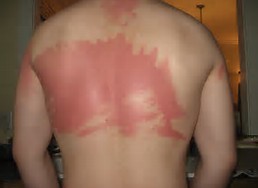FOR IMMEDIATE RELEASE
July 11, 2017
Celebrity Cook-off features community leaders having fun with Saskatchewan foods
(SASKATOON, SK) A Taste of Saskatchewan, presented by Conexus Credit Union, kicks off today with two incredible cooking demonstrations on the Farm & Food Care Saskatchewan Chef’s Series Stage.
The Chef’s Series is a cooking demonstration and chef competition that takes place all week long during A Taste of Saskatchewan in Kiwanis Park, Saskatoon. For the third year, Taste of Saskatchewan organizer SaskTel Centre has teamed up with Farm & Food Care Saskatchewan
(FFC SK), a group that represents thousands of crop and livestock farmers, chefs and agriculture businesses in the province, to present the Farm & Food Care Chef’s Series.
Similar to Chopped! chefs will compete throughout the week using ‘black boxes’ filled with mystery ingredients grown in Saskatchewan. The winner moves onto the next round, with the final match-up for the title of “Top Chef Saskatchewan” on Sunday, July 16 at 12:30 PM.
The Chef’s Series Stage will also feature some special shows to jump start the Chef’s Series today. Chef Anthony McCarthy, Executive Chef of The Saskatoon Club, will kick off the Chef’s Series with an amazing cooking demonstration at 12:15 pm. Samples will be available in return for donations of cash or food tickets which will be presented to the Saskatoon Food Bank & Learning Centre.
At 4:00 PM, the Chef’s Series is proud to present our first Celebrity Cook-off! Randy Pshebylo, Executive Director of the Riversdale Business Improvement District, will join Chef Anthony McCarthy to showcase his culinary talents and demonstrate how to cook with Saskatchewan-grown foods.
Farm & Food Care nominated Randy Pshebylo to take part in this year’s Chef’s Series Celebrity Cook-off. “Randy has worked tirelessly to improve and enrich our community,” said Adele Buettner, Project Manager for FFC SK and one of the event organizers. “Plus, he’s a great sport! It will be so much fun to watch Randy and Anthony cook together.”
Shows run every day on the Chef’s Series stage at 12:15, 4:00 and 6:30 PM. Every show will include chances to win prizes and enjoy lots of onstage excitement. Even better, patrons that purchase dishes featuring Saskatchewan-grown ingredients from participating food vendors will be eligible to enter the onsite draw for a new barbecue or new TV!
Organizers would like to thank all the sponsors of the Chef’s Series. All of these products-including many other Saskatchewan-grown foods-will be featured at the festival.
More information is available on tasteofsaskatchewan.ca or
farmfoodcaresk.org/events
For more information, contact:
John Howden
Director of Business Development
SaskTel Centre
306.975.3151
jhowden@sasktelcentre.com
Adele Buettner
Project Manager
Farm & Food Care Saskatchewan
306.477.FOOD (3663)
office@farmfoodcaresk.org
Backgrounder
SaskTel Centre is the largest indoor public assembly facility in Saskatchewan. It is Saskatchewan’s number one venue for large-scale musical productions, as well as one of the Canada’s busiest entertainment and sports venues. SaskTel Centre hosts more than 500,000 guests annually, with seating capacity of approximately 13,000 for concerts and 15,100 for hockey and lacrosse. SaskTel Centre is the home of the Saskatoon Blades Hockey Club of the Western Hockey League and The Saskatchewan Rush of the National Lacrosse League.
Conexus Credit Union’s A Taste of Saskatchewan is Saskatoon’s festival of fabulous food featuring over 30 of Saskatoon’s finest restaurants serving their house favorite dishes in beautiful Kiwanis Park from July 11-16, 2017. The extensive menu offers everything from succulent entrées to delicious desserts to specialty items.
Farm & Food Care Saskatchewan (FFC SK) is a non-profit coalition of farm families, agribusinesses, food processors, restaurants, retailers, food companies and individuals. FFC SK seeks to build confidence in Saskatchewan food production – to let consumers know that the food we produce is healthy, safe and responsibly grown; that farmers and ranchers are innovative, technologically advanced and care deeply about the animals and land they work with. Today, less than 3% of Canadians have a direct link to the farm, so it is not surprising that many people want to know more about food and farming. FFC SK administers several programs to help address consumer questions and build trust in our farmers and in Saskatchewan-grown foods.




